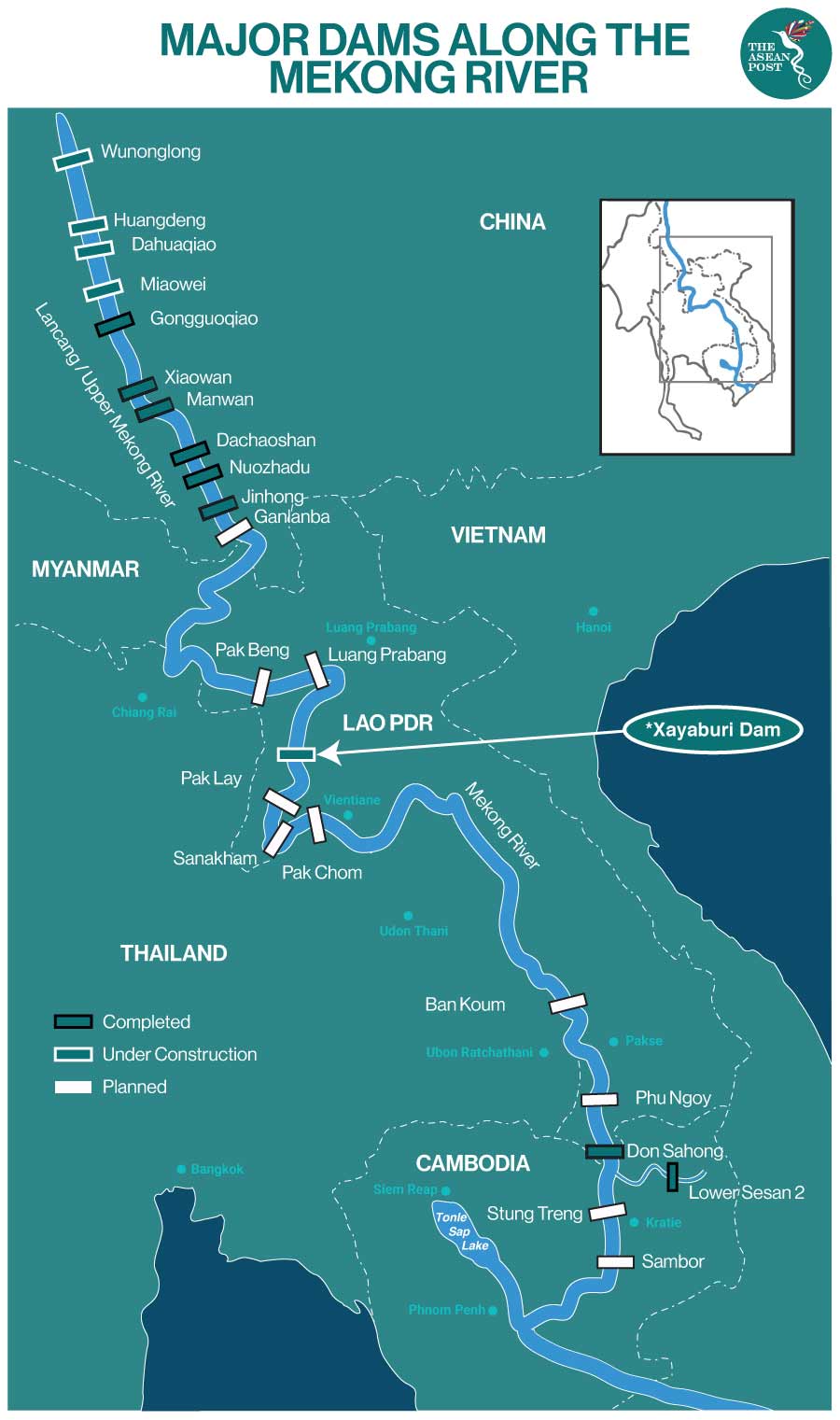Water levels in Southeast Asia’s largest river may be at its lowest in a century.
Low rainfall, high temperatures and poor dam regulations are contributing to a historic low at the Mekong, affecting lives, the region’s agriculture and fishing industries and leading to rapidly drying taps.
Chinese dams control the flow of the 4,350-kilometre (km) river which originates in the Tibetan highlands before travelling across Myanmar, Lao, Thailand, Cambodia and Vietnam. International Rivers, an environmental advocacy non-governmental organisation (NGO), notes that there are seven dams along the Mekong river in China as of 2019 – with 20 more planned or under construction. These dams have affected water levels over the past decade.
Last year, the tide of the river dropped to record lows, killing fish and threatening millions of livelihoods. Due to reduced water levels, several ASEAN member states such as Lao, Thailand, Vietnam and Cambodia have ferociously battled severe drought.
“This could be very likely the lowest point the river has experienced in the last hundred years, and it might even extend farther than that,” said Brian Eyler, Southeast Asia Program Director for the Stimson Center – a Washington-based think tank which promotes international peace and security. Analysis of satellite images by the organisation found that water levels in the Golden Triangle, a region where the borders of Myanmar, Lao and Thailand meet, was lower last July than the previous century-low in April 2016.

Eyler, who authored a book titled ‘The Last Days of the Mighty Mekong’, said there are plans for 500 new dams to be built along the Mekong – the impact of which is uncertain.
Climate Change
According to the Center for Strategic and International Studies (CSIS), 500,000 people have been displaced by weather-related natural disasters across Southeast Asia so far in 2020. Typhoon’s Phanfone and Vongfong have struck the Philippines this year while Indonesia’s capital has twice been inundated by region-wide flooding.
Between 2008 and 2018, 54.5 million people were displaced by weather-related natural disasters across Southeast Asia.
Climate change remains one of the greatest threats to long-term stability in the region.
However, the CSIS stated that the “perfect storm for calamitous environmental impacts is currently brewing in the Mekong region, where the effects of climate change on traditional weather patterns are combining with the growing ecological impact on water flow of upstream dams in the Mekong River.”
Across the Greater Mekong region, temperatures have increased by 0.5 to 1.5 degree Celsius in the past five decades and is projected to continue rising.
“Thailand and other countries in the region are bracing for serious water shortages over the next several months, while Vietnam faces the greatest threat in the coming years as lower water levels and sediment flow in the Mekong combine with rising sea levels and salination that will devastate its vast, agriculturally rich Mekong River delta,” noted CSIS in a report.
The climate change impacts in the Vietnamese Mekong Delta have resulted in the exodus of farmers as saltwater intrusion and drought are destroying crops, according to a media report.
In 2013, it was reported that farmers experienced having entire fields destroyed by salt water that flooded into the soil which pushed a significant number of dwellers into poverty and debt.
ArcGIS, a geographic information system maintained by the Environmental Systems Research Institute revealed that an estimated 1.7 million people have left the Mekong Delta in Vietnam in the last decade. Whereas about 14.5 percent of inhabitants of the Mekong Delta have migrated to escape climate change. Poverty is also an even larger contributing factor to wanting to leave the area.
The world’s largest and most productive inland fishery, with more than 850 fish species, is well and truly threatened. The ecosystem and ecosystem services destruction may hasten the devastation of the Mekong river and threaten its surrounding population, projected to rise to 100 million by 2025.
Related Articles:
